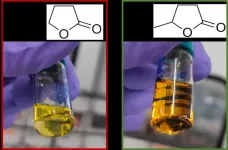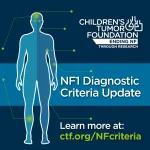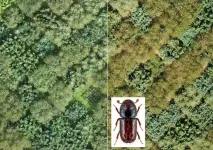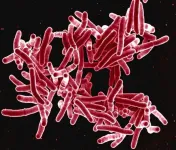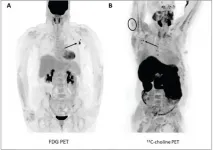Silicon chips combine light and ultrasound for better signal processing
2021-05-19
(Press-News.org) The continued growth of wireless and cellular data traffic relies heavily on light waves. Microwave photonics is the field of technology that is dedicated to the distribution and processing of electrical information signals using optical means. Compared with traditional solutions based on electronics alone, microwave photonic systems can handle massive amounts of data. Therefore, microwave photonics has become increasingly important as part of 5G cellular networks and beyond. A primary task of microwave photonics is the realization of narrowband filters: the selection of specific data, at specific frequencies, out of immense volumes that are carried over light.
Many microwave photonic systems are built of discrete, separate components and long optical fiber paths. However, the cost, size, power consumption and production volume requirements of advanced networks call for a new generation of microwave photonic systems that are realized on a chip. Integrated microwave photonic filters, particularly in silicon, are highly sought after. There is, however, a fundamental challenge: Narrowband filters require that signals are delayed for comparatively long durations as part of their processing.
"Since the speed of light is so fast," says Prof. Avi Zadok from Bar-Ilan University, Israel, "we run out of chip space before the necessary delays are accommodated. The required delays may reach over 100 nanoseconds. Such delays may appear to be short considering daily experience, however the optical paths that support them are over ten meters long! We cannot possibly fit such long paths as part of a silicon chip. Even if we could somehow fold over that many meters in a certain layout, the extent of optical power losses to go along with it would be prohibitive."
These long delays require a different type of wave, one that travels much more slowly. In a study recently published in the journal Optica, Zadok and his team from the Faculty of Engineering and Institute of Nanotechnology and Advanced Materials at Bar-Ilan University, and collaborators from the Hebrew University of Jerusalem and Tower Semiconductors, suggest a solution. They brought together light and ultrasonic waves to realize ultra-narrow filters of microwave signals, in silicon integrated circuits. The concept allows large freedom for filters design.
Bar-Ilan University doctoral student Moshe Katzman explains: "We've learned how to convert the information of interest from the form of light waves to ultrasonic, surface acoustic waves, and then back to optics. The surface acoustic waves travel at a speed that is 100,000 slower. We can accommodate the delays that we need as part of our silicon chip, within less than a millimeter, and with losses that are very reasonable."
Acoustic waves have served for the processing of information for sixty years, however their chip-level integration alongside light waves has proven tricky. Moshe Katzman continues: "Over the last decade we have seen landmark demonstrations of how light and ultrasound waves can be brought together on a chip device, to make up excellent microwave photonic filters. However, the platforms used were more specialized. Part of the appeal of the solution is in its simplicity. The fabrication of devices is based on routine protocols of silicon waveguides. We are not doing anything fancy here." The realized filters are very narrowband: the spectral width of the filters passbands is only 5 MHz.
In order to realize narrowband filters, the information-carrying surface acoustic waves is imprinted upon the output light wave multiple times. Doctoral student Maayan Priel elaborates: "The acoustic signal crosses the light path up to 12 times, depending on choice of layout. Each such event imprints a replica of our signal of interest on the optical wave. Due to the slow acoustic speed, these events are separated by long delays. Their overall summation is what makes the filters work." As part of their research, the team reports complete control over each replica, towards the realization of arbitrary filter responses. Maayan Priel concludes: "The freedom to design the response of the filters is making the most out of the integrated, microwave-photonic platform."
INFORMATION:
ELSE PRESS RELEASES FROM THIS DATE:
2021-05-19
Scientists at SPECIFIC Innovation and Knowledge Centre, Swansea University, have found a way to replace the toxic, unsustainable solvents currently needed to make the next generation of solar technology.
Printed carbon perovskite solar cells have been described as a likely front runner to the market because they are extremely efficient at converting light to electricity, cheap and easy to make.
A major barrier to the large-scale manufacture and commercialisation of these cells is the solvents used to control crystallisation of the perovskite during fabrication: this is because they are ...
2021-05-19
ITHACA, N.Y. - For the first time, Cornell University researchers have developed a technique for studying the neuroscience of motor control in mice ¬- by focusing on a mouse's tongue when it licks a water spout.
The technique incorporates high-speed cameras and machine learning in a tractable experimental setup that opens the door for revealing mysteries of how the motor cortex works, understanding the neural basis of related disorders like Parkinson's disease, and informing robots.
"We now have an approach in a mouse where we can bring all the tools of modern neuroscience to bear on this really classic problem of motor control," said senior author Jesse Goldberg, associate professor of neurobiology and behavior.
The field of motor control neuroscience has made advancements ...
2021-05-19
Updated Criteria Also Released for Legius Syndrome and Mosaic NF
NF2 and Schwannomatosis Diagnostic Criteria to Be Released Later This Year
The Children's Tumor Foundation (CTF) today announced the publication of updated diagnostic criteria for the genetic disorder neurofibromatosis type 1 (NF1) in Genetics in Medicine, the official journal of the American College of Medical Genetics and Genomics. The new publication is the result of an extensive, multi-year collaborative effort of over 90 leading neurofibromatosis (NF) experts from around the globe, and is aimed at improving the accuracy and earlier diagnosis of NF1 in patients, thus ultimately leading to improved care and quality of life for those patients. ...
2021-05-19
Open up Scott Roy's Twitter bio and you'll see a simple but revealing sentence: "The more I learn the more I'm confused." Now the rest of the scientific world can share in his confusion. The San Francisco State University associate professor of Biology's most recent research, published earlier this month in one of the scientific world's most prestigious journals, catalogues a strange and confounding system of genes in a tiny rodent that scientists have ignored for decades.
"This is basically the weirdest sex chromosome system known to science," Roy said. "Nobody ordered this." But he's serving it anyway.
The owner of those chromosomes is the creeping vole, a burrowing rodent native to the Pacific Northwest. Scientists ...
2021-05-19
In recent years, foresters have been able to observe it up close: First, prolonged drought weakens the trees, then bark beetles and other pests attack. While healthy trees keep the invaders away with resin, stressed ones are virtually defenseless. Freiburg scientist Sylvie Berthelot and her team of researchers from the Faculty of Environment and Natural Resources and the Faculty of Biology are studying the importance of tree diversity on bark beetle infestation. They are investigating whether the composition of tree species affects bark beetle feeding behavior. The team recently published their findings in the Journal of Ecology.
In a 1.1 hectare experimental set-up in Freiburg, six native deciduous and coniferous tree species from Europe and six deciduous and coniferous ...
2021-05-19
SAN ANTONIO (May 19, 2021) -- Four months of multi-drug therapy that included rifapentine and moxifloxacin treated active tuberculosis (TB) as effectively as the standard six-month regimen in a multinational study, cutting treatment time by a third. Coauthors including Marc Weiner, MD, of The University of Texas Health Science Center at San Antonio, reported the findings May 6 in the New England Journal of Medicine.
"Shorter treatment would be easier for people to complete without missing doses, and ultimately may be cost-effective," said Dr. Weiner, associate professor in the health science center's Joe R. and Teresa Lozano END ...
2021-05-19
A team of researchers at the Centre Spatial de Liège (CSL) of the University of Liège has just developed a method to identify the contributors and origins of stray light on space telescopes. This is a major advance in the field of space engineering that will help in the acquisition of even finer space images and the development of increasingly efficient space instruments. This study has just been published in the journal Scientific Reports.
Space telescopes are becoming more and more powerful. Technological developments in recent years have made it possible, for example, to observe objects further and further into the universe or to measure the composition of the Earth's atmosphere with ever greater precision. However, there is still one factor limiting the performance ...
2021-05-19
HAMILTON, ON (May 19, 2021) - Researchers have found that the inclusion of a third drug to commonly used dual-drug inhalers can reduce asthma exacerbations and improve control over the disease in children, adolescents, and adults with moderate-to-severe asthma.
A team from McMaster University and The Research Institute of St. Joe's Hamilton announced their findings from a systematic review and meta-analysis. Data from 20 randomized controlled trials, which included a total of almost 12,000 patients, were analyzed in the study.
Dual-drug inhalers used to treat asthma typically contain an inhaled corticosteroid (ICS) to reduce inflammation, as well as a long-acting beta-adrenoceptor agonist (LABA) that acts as a bronchodilator. High-certainty evidence showed that the inclusion of a third ...
2021-05-19
Leesburg, VA, May 19, 2021--According to an open-access article in ARRS' American Journal of Roentgenology (AJR), increased axillary lymph node or ipsilateral deltoid uptake is occasionally observed on FDG or 11C-choline PET performed after Pfizer-BioNTech or Moderna COVID-19 vaccination.
"Recognition of occasional abnormal axillary lymph node or deltoid uptake on PET examinations performed after COVID-19 vaccination will aid interpreting physicians and reduce unnecessary biopsies," wrote corresponding author Jason R. Young from the department of radiology at Mayo Clinic in Rochester, MN.
Young and colleagues' retrospective study included ...
2021-05-19
For the first time, geological records have been used to reconstruct the history of Larsen C Ice Shelf in Antarctica. The ice shelf is the largest remaining remnant of a much more extensive area of ice on the Antarctic Peninsula that began to break up during the 1990s (Larsen A), and saw a huge collapse in 2002 (Larsen B). This new reconstruction enables scientists to better understand if and when the remaining ice shelf could collapse in the future.
Publishing this month in the journal Geology an international team describes how the largest remaining ice shelf on the Antarctic ...
LAST 30 PRESS RELEASES:
[Press-News.org] Silicon chips combine light and ultrasound for better signal processing
